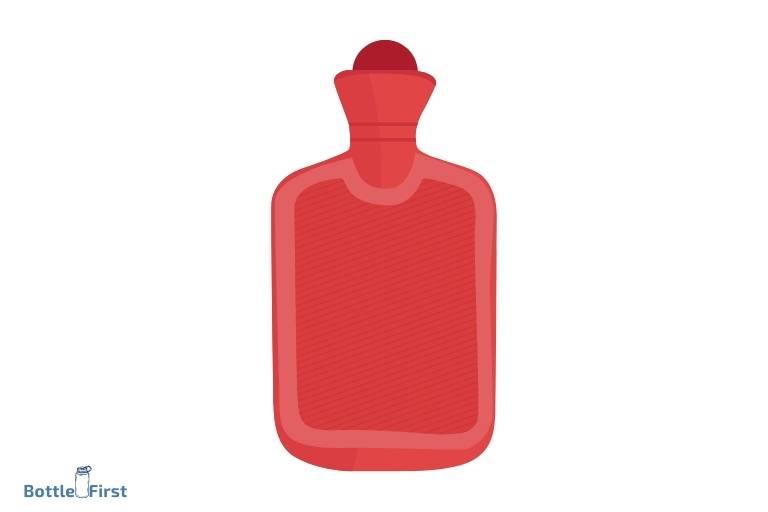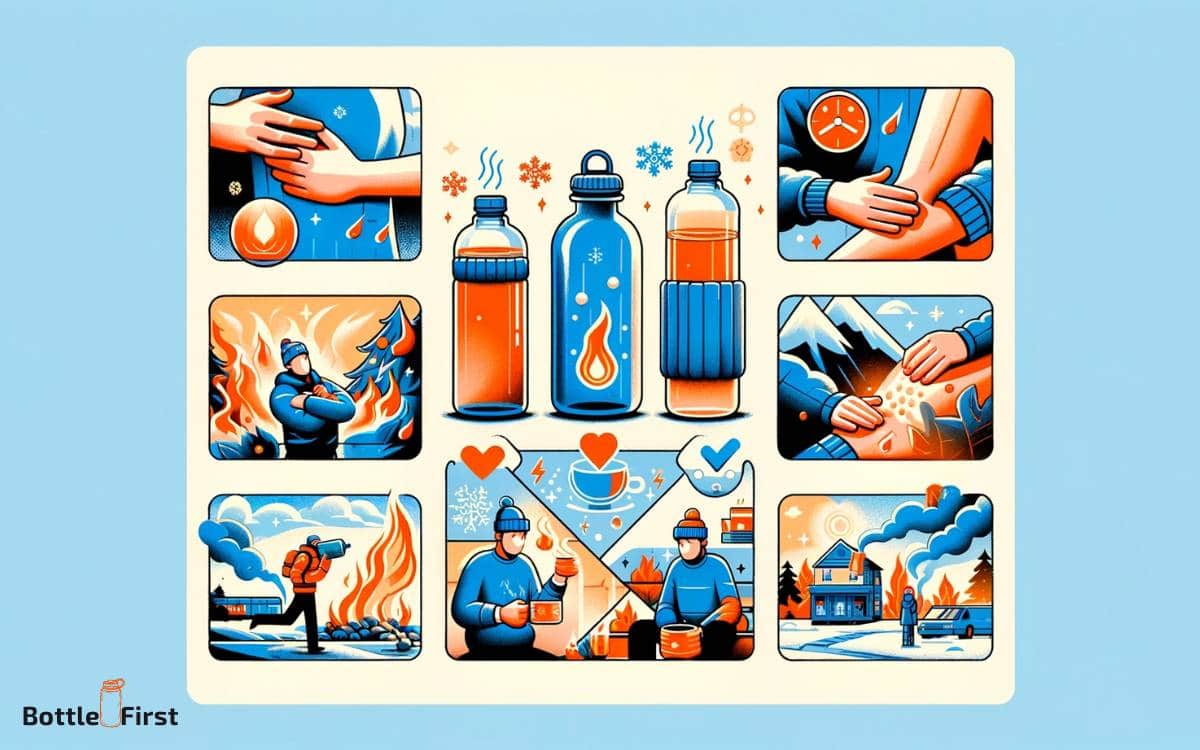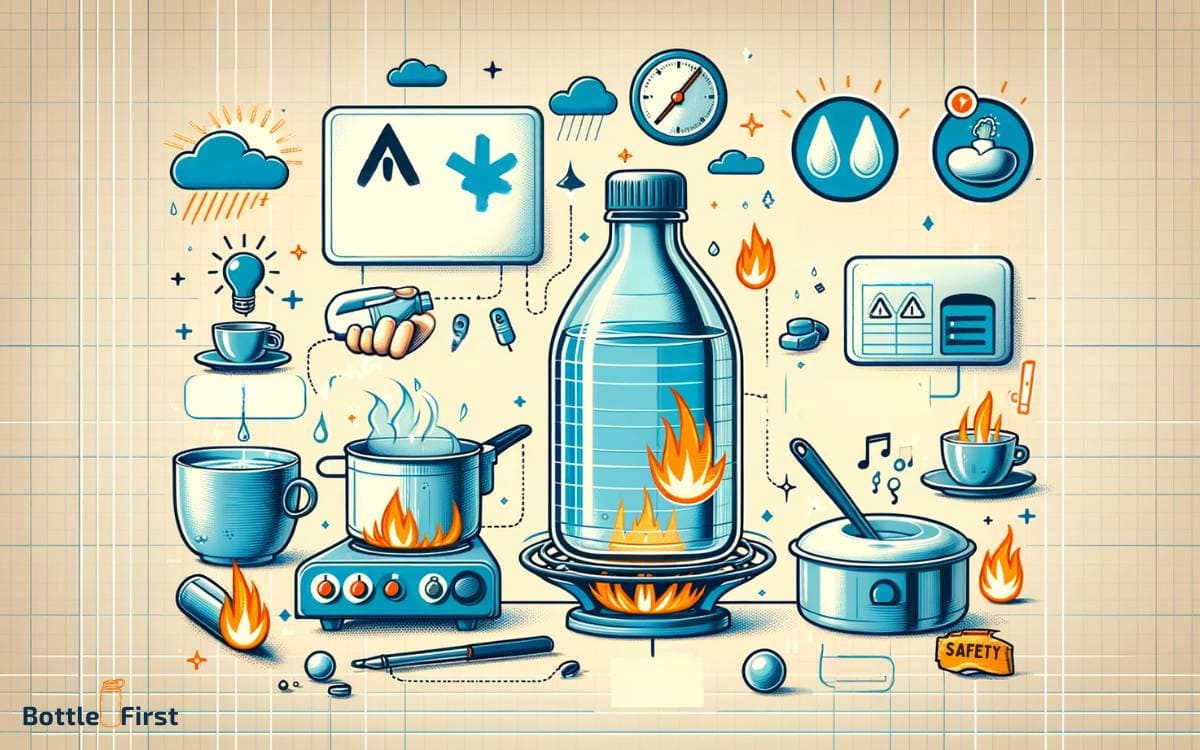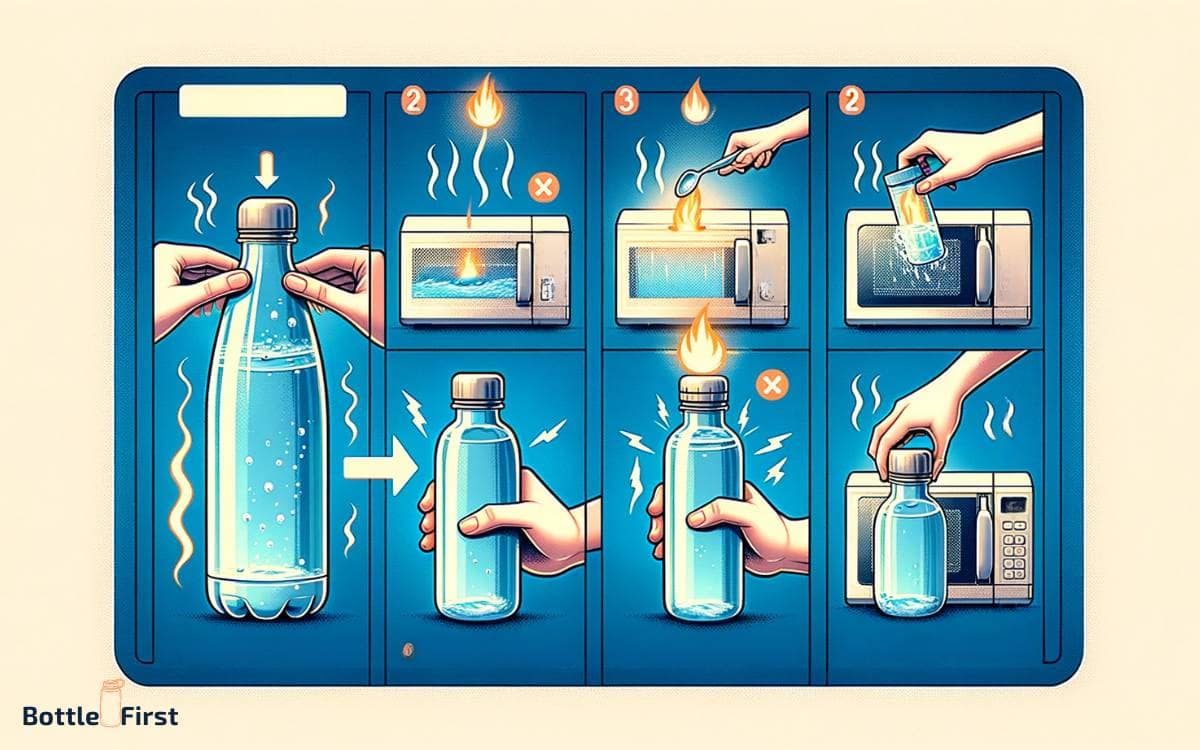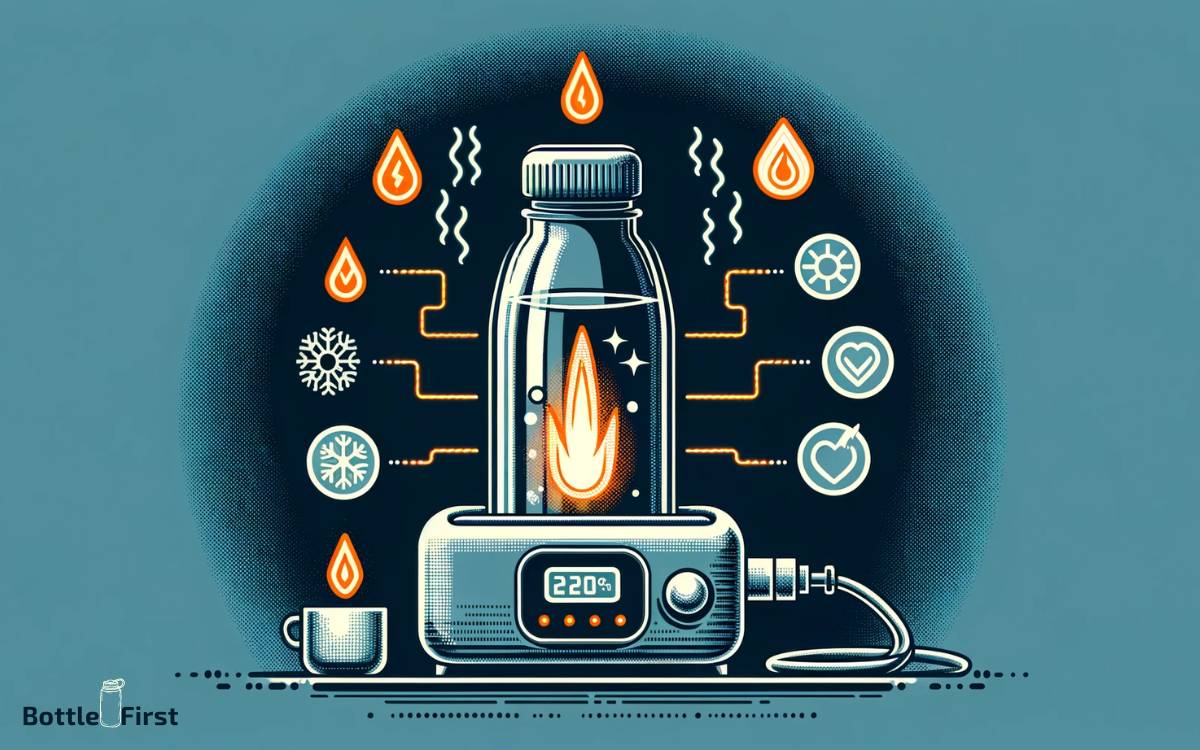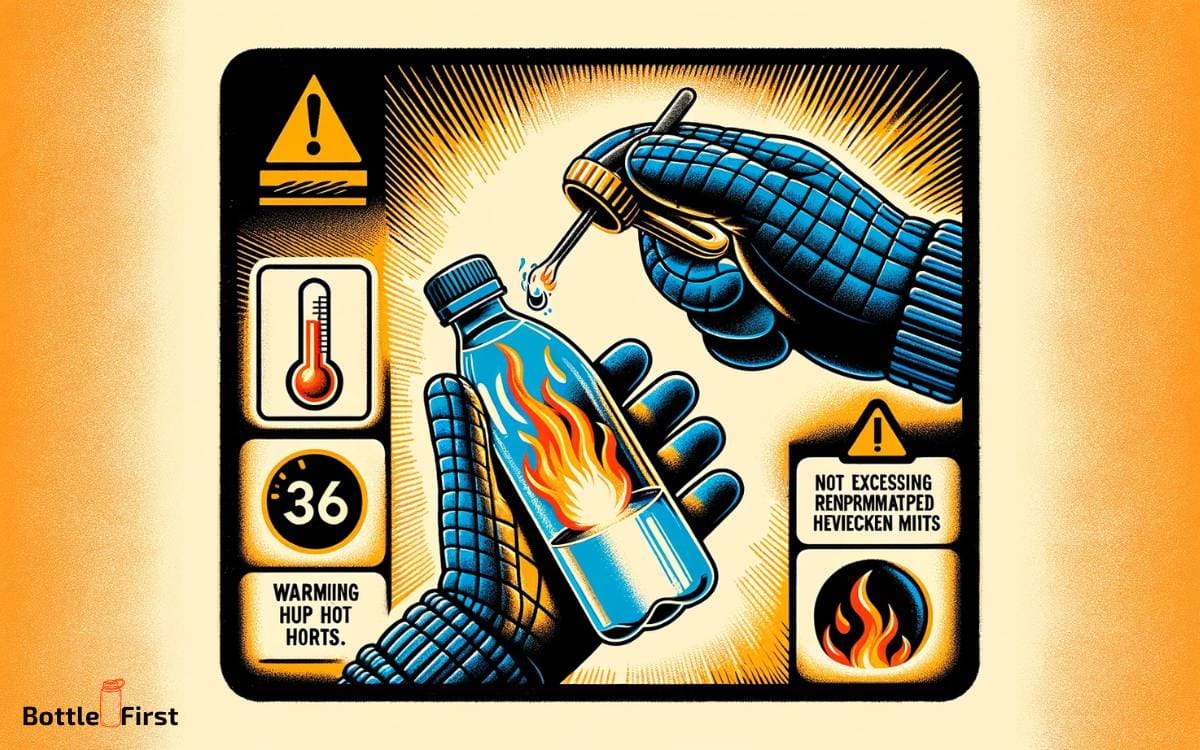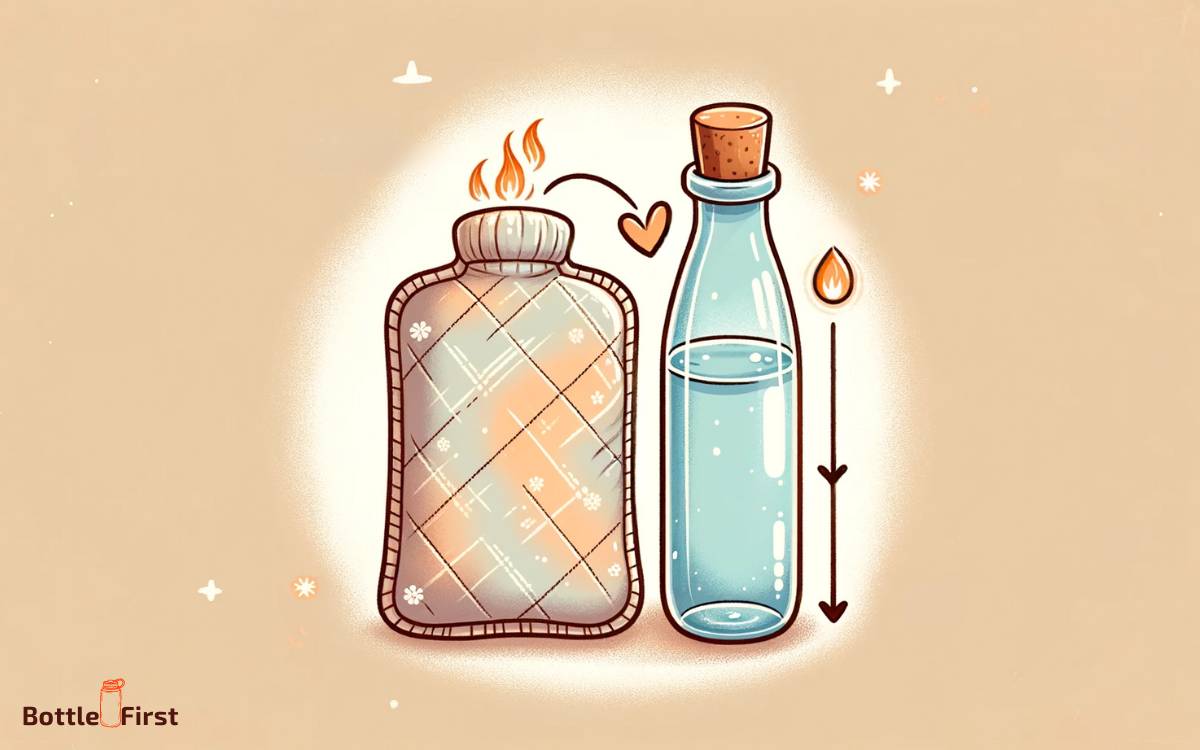How to Warm Up a Water Bottle? 3 Easy Steps
To warm up a water bottle, you can immerse it in a pan of warm water, heat it in the microwave, or use a bottle warmer designed for this purpose. It’s crucial to ensure that the water is not too hot, as it could turn harmful.
Warming up a water bottle might seem like a simple task, but it needs to be done carefully and correctly. You need to ensure that the water is evenly heated and that it doesn’t become too hot.
Overheating the water can not only damage the bottle but also potentially harm the person who will be drinking the water.
Warming a water bottle is a simple procedure, but one that requires caution. Always check the temperature before drinking to prevent burns.
Follow the manufacturer’s instructions for the specific type of bottle you have to optimize safety and efficiency.
Key Takeaway
Why Warm Up Your Water Bottle?
Importance Of Warming Up A Water Bottle
Warming up your water bottle before using it may seem unnecessary, but it actually offers several benefits that can enhance your overall experience.
Whether you are using a water bottle for staying hydrated during your workouts or for soothing comfort during cold winter days, warming it up can make a significant difference.
Here are some key points about the importance of warming up a water bottle:
- Prevents shock to the system: Cold liquid can be a shock to the body, especially if you are already warm or have sensitive teeth. By warming up your water bottle, you can avoid this sudden temperature change, making it easier and more pleasant to consume your beverage.
- Improves digestion: Cold liquids can slow down digestion, as the body has to work harder to warm them up to body temperature. By drinking warm water, you can enhance digestion and keep your digestive system happy.
- Promotes relaxation and comfort: There’s nothing quite like sipping on a warm beverage to feel instantly relaxed and cozy. A warm water bottle can provide a soothing and comforting sensation, whether you’re using it for relaxation or for relieving cramps or muscle tension.
- Helps retain heat: If you’re using a insulated water bottle to keep your hot beverages warm, pre-warming it can help the drink stay hot for longer. By warming up the bottle before pouring in the hot liquid, you can prevent heat loss and prolong the drink’s warmth.
- Enhances flavor: Warming up your water bottle can enhance the flavor of certain beverages, such as herbal teas or infused water. The warm temperature can help release the flavors and aromas, resulting in a more enjoyable and satisfying drink.
By taking a few extra minutes to warm up your water bottle, you can elevate your drinking experience and enjoy the numerous benefits it offers.
So, the next time you reach for your water bottle, consider giving it a gentle heat to maximize its potential.
What You’ll Need
Materials Required For Warming Up A Water Bottle
When the weather gets chilly, there’s nothing quite as comforting as a warm water bottle. Whether you’re snuggling up in bed or heading out for a winter adventure, a warm water bottle can provide soothing heat and comfort.
To warm up a water bottle, gather the following materials:
- Water bottle: Choose a high-quality hot water bottle made of durable and heat-resistant material. A standard-sized bottle will usually hold around 2 liters of water.
- Hot water: Boil a kettle or heat water on the stovetop. Ensure the water is hot enough to provide warmth but not scalding. It’s essential to use freshly boiled water to achieve optimal heat retention.
- Funnel: Use a funnel to pour the hot water into the water bottle without spills or splashes. This will make the process easier and minimize the risk of burns.
- Soft cover: Invest in a cozy cover for your water bottle to insulate the heat and add comfort when in contact with your skin. Look for covers made of soft and insulating materials like fleece or knitted fabric.
- Thermometer (optional): For those who prefer precise temperature control, using a thermometer can help ensure the water is at an optimal warmth level before sealing the bottle. This step is particularly important when using hot water bottles for medical purposes.
By having these materials ready, you’ll be well-prepared to warm up your water bottle and enjoy its comforting warmth throughout the day or night.
Safety Precautions To Keep In Mind
When warming up a water bottle, it’s crucial to prioritize safety to prevent any accidents or injuries.
Consider the following safety precautions:
- Check for leaks: Before filling the water bottle, inspect it for any signs of damage or leaks. A faulty bottle can lead to burns or scalds, so it’s essential to ensure its integrity. If you notice any leaks or damage, it’s best to replace the bottle.
- Use hot water cautiously: While hot water provides warmth, it can also cause burns if mishandled. Be careful when pouring hot water into the bottle to avoid any spills or splashes. Utilizing a funnel can help minimize the risk of accidents.
- Test the temperature: Before applying the water bottle to your body, test the temperature by gently placing it against the back of your hand or forearm. If the heat feels too intense or uncomfortable, wait for a few minutes before using it directly on your body.
- Overheating prevention: Never overfill the water bottle or exceed the recommended maximum temperature stated by the manufacturer. Overheating can cause the bottle to burst or lead to burns.
- Supervise children: If children are using a hot water bottle, ensure they are supervised. Teach them about the potential risks and instruct them on safe usage.
- Do not use boiling water: Avoid using water straight from a boiling kettle. Allow it to cool for a few minutes to reach the ideal temperature. This precaution will prevent burns and prolong the life of the water bottle.
By adhering to these safety precautions, you can enjoy the comfort and warmth of a water bottle while minimizing the risk of accidents or injuries.
Stay cozy and snug with a well-warmed water bottle this winter. Stay safe and stay warm!
Step 1: Warming Up A Water Bottle
Warming up a water bottle can come in handy during those chilly nights or when you’re in need of some soothing heat therapy.
Whether you prefer the traditional hot water method, an electric water bottle warmer, or even microwaving your water bottle, here are some effective ways to warm up your trusty companion:
Traditional Hot Water Method
- Start by boiling some water in a kettle or on the stove.
- Pour the hot water carefully into a heat-resistant bottle. Make sure to leave some space to avoid overflowing or leakage.
- Secure the lid tightly to prevent any accidents or spills.
- Wrap the water bottle with a towel or place it in an insulating cover to maintain its warmth.
- Enjoy the cozy feeling as the warmth seeps through the bottle, keeping you comfortable on those chilly days and nights.
Electric Water Bottle Warmer
- Invest in an electric water bottle warmer, which is a convenient and efficient option for warming up your water bottle.
- Plug in the warmer and place your water bottle inside, making sure it is properly sealed to avoid any spillage.
- Set the temperature as per your preference and let the warmer do its magic. It will gently warm the water, ensuring it reaches the desired temperature without boiling.
- Once warmed up, remove the bottle from the warmer and wrap it in a cloth or towel for insulation.
- Revel in the soothing warmth that the electric water bottle warmer provides.
Microwaving Your Water Bottle
- Check if your water bottle is microwave-safe before attempting this method. Only use bottles explicitly labeled as safe for microwave use.
- Remove the lid from the water bottle and place it in the microwave.
- Heat the water bottle in short intervals, ensuring that you don’t overheat it. Microwaving for 20-30 seconds at a time is recommended.
- Use caution when removing the bottle from the microwave, as it may be hot.
- Prioritize safety by placing a cloth or towel around the bottle to avoid burns and maintain the warmth.
Now that you’re equipped with these warming methods, you can ensure that your water bottle is always ready to provide you with the comfort and warmth you desire. Stay cozy!
Step 2: Tips For Safe And Effective Warm-Up
When it comes to warming up your water bottle, it’s important to follow some key guidelines to ensure safety and effectiveness.
Whether you need a warm water bottle to soothe aches and pains or keep yourself warm during cold weather, here are some tips to keep in mind:
Temperature Recommendations For Different Situations
- For general warmth: Aim for a water bottle temperature between 100°f and 120°f. This will provide a comforting warmth without being too hot.
- For pain relief: If you’re using a warm water bottle to alleviate muscle soreness or menstrual cramps, a temperature of around 115°f to 125°f is ideal. Be cautious not to go overboard, as excessive heat can cause burns.
- For cold weather: During extremely cold conditions, you may want a water bottle with a higher temperature range, such as 120°f to 130°f. This will help keep you warm for an extended period of time.
How To Test The Temperature Of Your Water Bottle
- Use a thermometer: The most accurate way to test the temperature of your water bottle is by using a thermometer specifically designed for liquids. Insert the thermometer into the water and wait for a few moments until it stabilizes.
- Touch test: If you don’t have a thermometer handy, you can perform a touch test. Gently touch the surface of the water bottle with the back of your hand or your forearm. If it feels comfortably warm to the touch but not too hot, it’s likely at an appropriate temperature.
- Gradual approach: Begin with warm water and gradually increase the temperature until you reach a point where it feels comfortable to you. This allows you to personalize the warmth level according to your preferences.
Avoiding Overheating And Burns – Safety Guidelines
- Never use boiling water: Avoid using water that has just been boiled, as this can cause severe burns. Allow the water to cool down for a few minutes before filling your water bottle.
- Use a cover or towel: To prevent direct contact with the hot water bottle, wrap it in a towel or use a cover specifically designed for water bottles. This acts as a barrier between the hot surface and your skin.
- Check for leaks and damages: Before using your water bottle, inspect it for any leaks or damages. A damaged water bottle can lead to hot water spills and potential injuries. If you notice any issues, it’s best to replace it with a new one.
- Don’t overheat or overuse: Never leave a water bottle on for an extended period of time, especially if it’s filled with hot water. Overheating can damage the bottle and increase the risk of burns. Limit your use to recommended time frames and give your water bottle breaks in between uses.
Remember, safety should always be your top priority when warming up a water bottle.
By following these guidelines and using your water bottle responsibly, you can enjoy the soothing warmth it provides without any risks of burns or injuries. Stay warm and cozy!
Step 3: Alternative Ways To Warm Up Your Water Bottle
Keeping your water bottle warm during cold days is essential for staying hydrated and comfortable.
While electric water bottle warmers are popular, there are alternative methods you can utilize to warm up your water bottle without relying on electricity.
In this section, we will explore some effective techniques, including insulated covers and sleeves, using warm compresses or heating pads, and natural heating methods.
Insulated Covers And Sleeves
Insulated covers and sleeves can provide excellent insulation for your water bottle, ensuring that the heat is retained for a longer duration.
Consider the following key points:
- Neoprene covers: Neoprene is a fantastic material that offers outstanding insulation properties. These covers are designed to fit different types and sizes of water bottles, providing a snug fit and efficient heat retention.
- Thermal sleeves: Thermal sleeves are an excellent option for keeping your water bottle warm. They are often made from materials like fleece or wool, which provide excellent insulation properties while also offering a cozy feel to hold.
- Reflective covers: Reflective covers are designed with an outer layer that reflects heat, aiding in maintaining the warmth of your water bottle. They are lightweight and easy to carry, making them a convenient choice for outdoor adventures.
Using A Warm Compress Or Heating Pad
Another practical approach to heating your water bottle is using a warm compress or heating pad.
Here are some details to consider:
- Warm compress: Soak a washcloth in warm water and wring out any excess moisture. Wrap the damp washcloth around your water bottle, securing it with a rubber band or string. This method helps transfer heat to the bottle, gradually warming it up.
- Heating pad: If you have access to a heating pad, simply wrap it around your water bottle and secure it tightly. Set the heating pad to a low or medium temperature to gradually warm up your bottle. Ensure that the heating pad’s temperature does not exceed the recommended limit for your specific water bottle.
Natural Heating Methods Without Electricity
In situations where electricity is not available or desired, natural heating methods can come in handy.
Consider the following suggestions:
- Warm water bath: Fill a basin or sink with hot water and submerge your water bottle for a few minutes. Make sure not to expose the bottle to scalding water as it may damage the material. This method is convenient when you have access to hot water.
- Sunlight exposure: On a sunny day, place your water bottle in direct sunlight for a few hours. The sunlight will naturally warm up the bottle, providing you with a cozy temperature for your drink.
- Body warmth: If you’re on the go, tuck your water bottle securely inside your jacket or between your layers of clothing. Your body heat will gradually warm up the bottle, ensuring you have a refreshing sip whenever you need it.
Warming up your water bottle is crucial for enjoying a hot or lukewarm beverage during colder seasons.
By utilizing insulated covers and sleeves, warm compresses or heating pads, and natural heating methods, you can keep your water bottle cozy without relying solely on electricity.
Try these alternative techniques and never compromise on your hydration needs, regardless of the temperature outside.
Can I Use the Same Steps to Use an Electric Hot Water Bottle to Warm Up a Water Bottle?
Can I use the same steps to use an electric hot water bottle to warm up a water bottle? Well, it depends. Electric hot water bottle instructions are designed specifically for heating purposes and may not be suitable for regular water bottles.
These instructions typically involve filling the hot water bottle with water, plugging it in to heat, and ensuring the temperature is appropriate. Using the same steps for a regular water bottle might not yield the desired outcome.
Conclusion
To conclude, warming up a water bottle is a simple yet effective way to provide relief and comfort in various situations.
Whether you’re seeking warmth on a cold winter day, soothing aching muscles, or alleviating menstrual cramps, heating a water bottle can offer immediate solace.
By choosing the appropriate method for warming, such as using hot water, a microwave, or an electric bottle warmer, you can ensure safety and optimal temperature control.
Remember to always follow the manufacturer’s instructions and take precautions to prevent burns or other accidents.
Additionally, using insulating covers or wrapping the bottle in a soft towel can prolong the warmth, allowing you to enjoy the benefits for a longer duration.
So, the next time you’re in need of warmth and comfort, don’t hesitate to try warming up a water bottle—it’s a simple, cost-effective solution that can make a world of difference.
Stay cozy!
